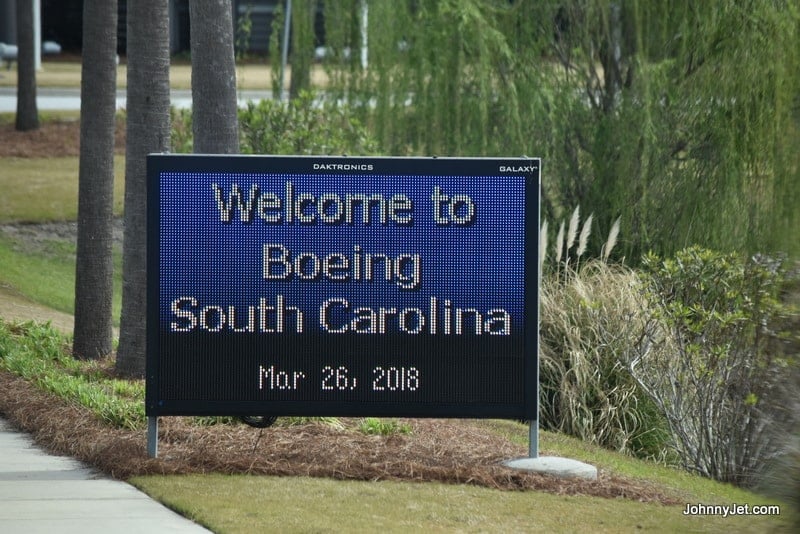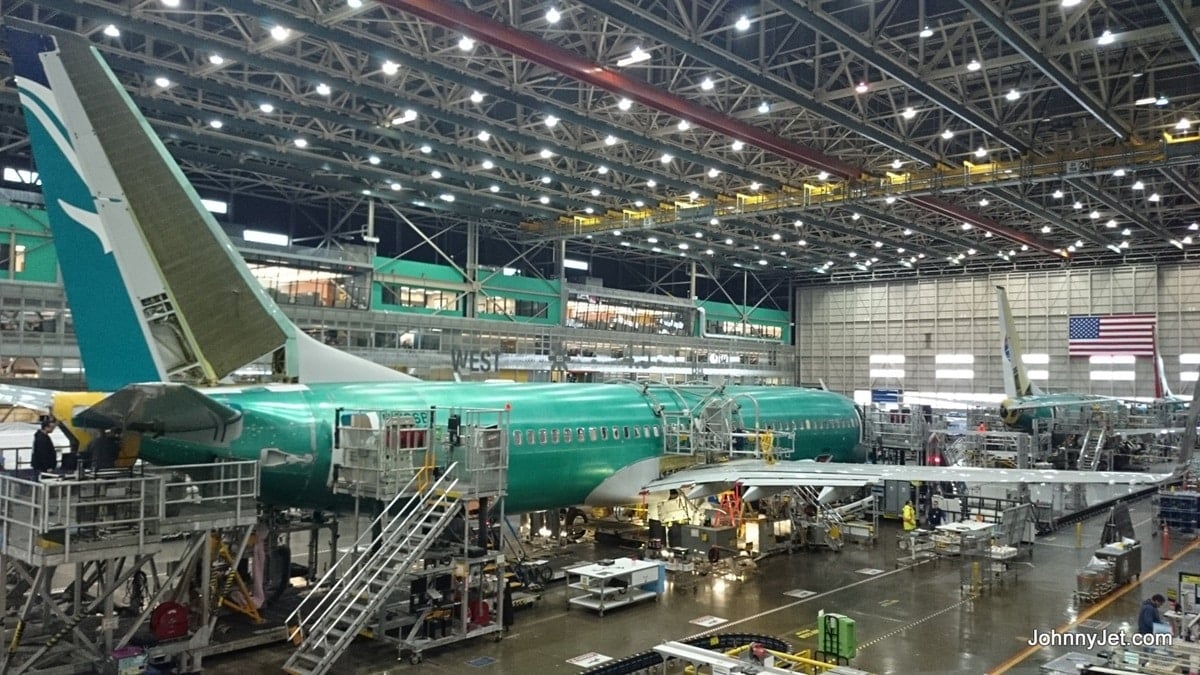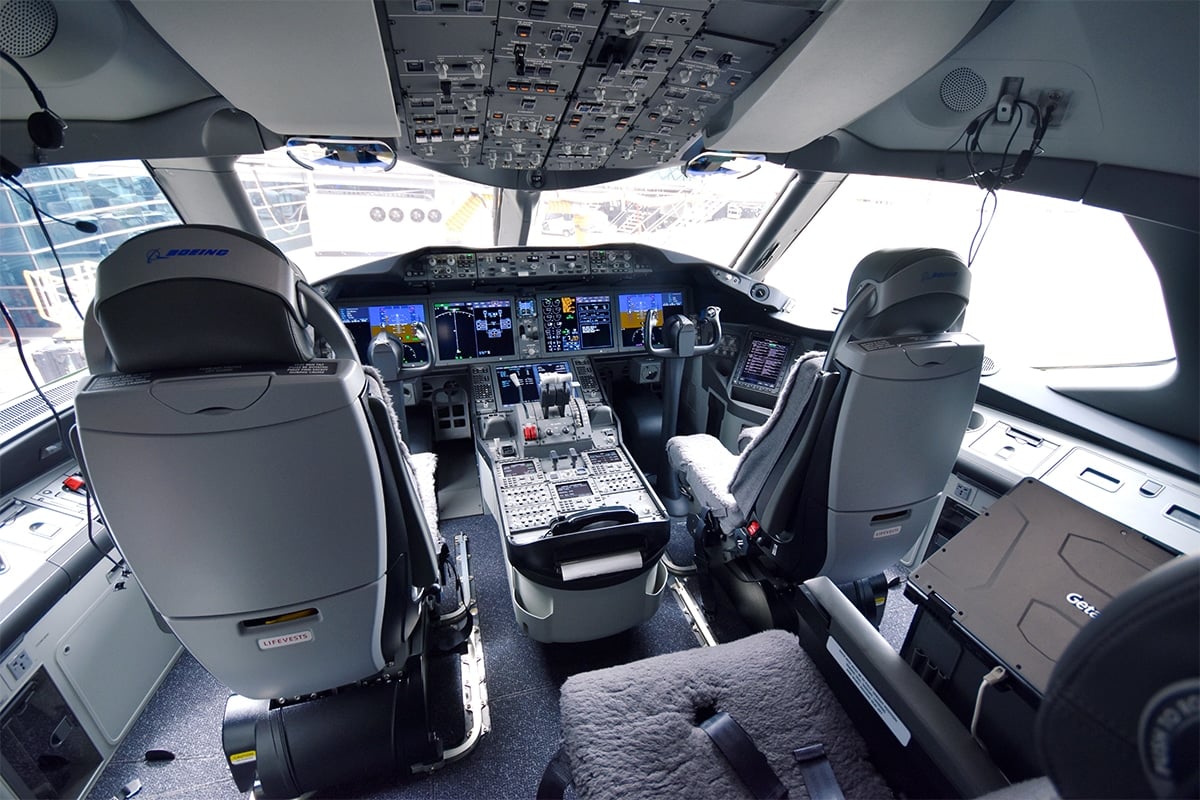
Yesterday morning I was on a 7am conference call with Boeing executives and airline reporters. The topic/theme of the call was “Boeing Confident Travel Initiative Briefing.”
The call was probably 40 minutes long. Jim Haas, a Boeing marketing executive, began by stating that “nothing is more important to Boeing than the health and well-being of people on [their] airplanes.” I wanted to chime in and say well that wasn’t the case when you and the FAA approved the 737-MAX, but I bit my lip so they didn’t disconnect me from the Cisco Webex.
Highlights of the call included how Boeing tells its customers (the airlines) the best way to keep the virus off of their planes. It created a webpage to help them and the general public get a better understanding of the strategy, which is here.
For starters, Boeing is telling airlines to encourage passengers to check in for flights online. It also recommends that airlines need to allow passengers to reschedule if they’re feeling sick for no penalty. That last part is a no-brainer, and I’ve been saying it for years, if not decades.

This is Boeing’s advice for passengers and airlines, straight from the Boeing website (scroll down to “Keeping you healthy today”). There are three parts:
Step 1: Steps travelers can take
While making your plans
Your health comes first
If you don’t feel well, reconsider your travel plans and seek professional medical advice on whether or not you should travel.
Be online instead of in line
See how much of your travel-related “paperwork” can be handled online, in order to save time and preserve physical distancing. Online options exist for many common tasks, such as securing e-visas, travel authorizations, checking in and tagging bags.
Plan ahead for different requirements
Your journey may involve multiple airlines, airports and even countries. Be sure to look ahead in your itinerary and learn about the different guidelines or requirements involved at each step. Then make sure you’re prepared to follow local regulations.
When packing for your trip
Masking for the long term
Masks are a common requirement. Reusable cloth masks require regular laundering, so factor that need into your itinerary. If you’re wearing a disposable mask, make sure to pack enough masks to cover your entire trip, including time spent at your destination.
Hand washing without water
A sink and soap may not be easily accessible while traveling. The U.S. Transportation Security Administration (TSA) allows one liquid hand sanitizer container (up to 12 ounces) in carry-on bags until further notice. (For traveling outside the U.S., check local requirements.)
Disinfectant wipes
Airlines are cleaning the cabin between flights, but you’re free to do your own wipe-down if you like. Consider bringing disinfectant wipes to wipe down any noncloth airplane cabin surfaces, such as tray tables and armrests.
While on your way
Keeping clean
You’ll come into contact with many surfaces while traveling, so remember to wash your hands at regular intervals. If soap and water are available, then there’s no better way to spend 20 seconds. If not, then use the hand sanitizer you packed in your carry-on.
Staying masked
Wear your cloth or disposable mask while you’re on the plane, unless specifically instructed otherwise by your flight crew.
Getting help
If you become sick while traveling, immediately inform a member of the flight crew, follow their instructions, and make sure to seek professional medical care once you’re on the ground.
I think by now most travelers know that the best was to minimize the spread of the virus is to not travel if you feel sick, practice physical distancing, avoid touching surfaces and your face, wash your hands often, use disinfect wipes, and wear a mask. The latter has sadly (and quite mind-blowingly) become a political issue thanks to the President of the USA, who refuses to wear a mask himself, but if this virus is going to ever be kept at bay, people need to be team players and do all of the above—which together is Step 1.

Step 2: Keeping the airplane virus-free
Step 2 rests in the airlines’ and Boeing’s hands. Boeing says that “with guidance from international health agencies,” it has with its “airline partners created comprehensive approaches to cleaning and disinfecting the airplane cabin and flight deck.” From the page:
Disinfecting airplanes: Keeping you and the flight crew safe
Thinking of the surfaces you touch
On the way to your seat, you’ll come into contact with multiple surfaces in the cabin. And your flight crew will touch these and more. We took all of this into account when testing and selecting the disinfectants that we recommend to our airline partners.
Creating a comprehensive approach
After carefully evaluating data for 20 disinfectants and referring to guidance from public health authorities, including the World Health Organization (WHO) and the U.S Centers for Disease Control and Prevention (CDC), we approved seven disinfectants and detailed the best ways to safely use them.
Helping airlines keep you safe
We share our comprehensive recommendations with all of our airline partners as they focus on creating the safest travel experience for you. This is an ongoing effort as we continue to work together closely, sharing best practices, the latest information and newest advances.
Step 3: Maintaining a healthy cabin environment
Step 3 is all on Boeing’s shoulders. In the company’s words, its planes’ “proven air circulation systems filter out more than 99.9% of viruses and bacteria, exchange the air every two to three minutes and create air flow that limits the spread of airborne contaminants.”
Boeing also said that its cabin air is captured by HEPA (high-efficiency particulate air) filters similar to those used in hospitals. This airflow helps minimize the spread of particulates by flowing primarily from ceiling to floor.
Jim said all Boeing planes have HEPA filters and have for the last 20 years. They’re replaced every 1-1.5 years, which seems a little long to go as I change my air conditioning filters every three months at home. He also said that there’s no difference in filtration among differently sized planes and that planes that are older than 20 years have them installed.
When the presentation was over I asked the first question, which turned out to get not the answer myself or anyone else on the call was expecting:
My question: Do you recommend passengers point the air vent jet on them to create a force field?
Jim’s answer: I wasn’t recording it but I was shocked when Jim said there’s a mix of answers in the industry. Some say to open the gasper valves (I didn’t know that’s what they’re officially called) and some recommend closing it. He also said that Boeing is actively studying it right now and some airlines choose not to install them at all. Another journalist chimed in and said, Boeing is just now studying it? Shocking, I know.
A question from another journalist (Jay Sorensen) which was interesting was:
Jay’s question: “When an aircraft is at the gate, which system mitigates viral spread the most? Ground air from the gate, or using the onboard system. And is the recycle system always on while on the ground?”
Answer: Boeing said it recommended airlines keeping it on while on the ground, too.
The final bit of interesting information was that Boeing is currently testing a UV lavatory. There’s a prototype designed to clean lavs between passenger use, but it’s still a couple years out.
For more info check out Boeing.com/confident-travel.








No need to politicize stories like this by blaming Mr.Trump for people not wearing masks– especially when the CDC, WHO, and many governors and mayors have gone back-and-forth, back-and-forth on the topic.
And the comment about it messing up his makeup is uncalled for (even if it was true.)
Don’t turn off your readers.
I love your website and I have been so pleased that you have never brought politics in to your website until today. Mentioning any political figure in your articles, I feel is totally inappropriate. I read your site because it is a break from the political storm going on. Please keep it non political.
You have said repeatedly that you wouldn’t be bringing politics on your “professional page”, well you just did. Your hatred for Trump is evident and your entitled to you opinion but your going to alienate readers and I suspect that is what you need right now with all your click bait articles. I have always loved your upbeat and funny commentary on your travel stories and even if some things were not pleasant. But now you are all about the doom and gloom. Your article today was awful and with all the places we can go for depressing news, I didn’t think yours would go this way. I’m sure Boeing loves it…not.
I would like to chime in with my support re Jody and Diane’s comments re politicizing. Your travel expertise is what you are accessed for and why you have such an online following. Perhaps you might provide a separate link to access your political comments so that we are not all held hostage to personals on politics (and religion). Thanks!
Here is another vote to keep Johnny Jet apolitical.